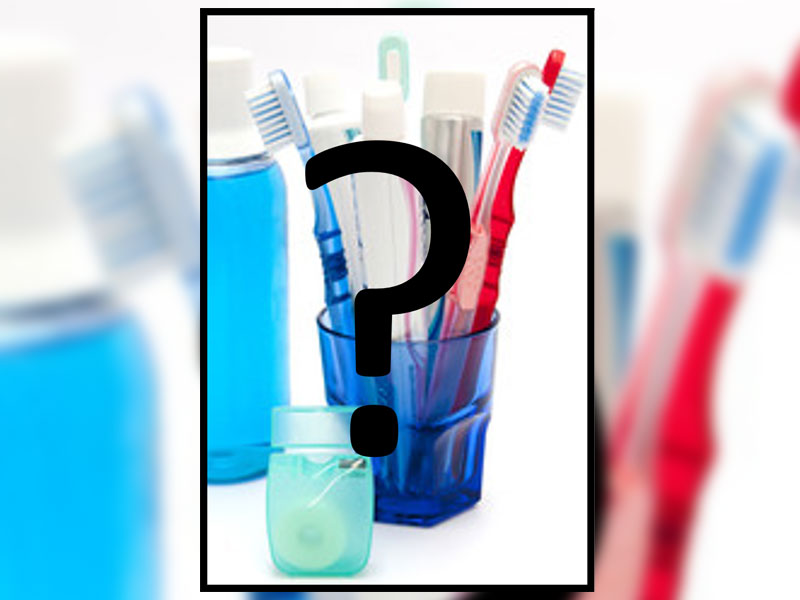It seems like every year a new toothbrush, toothpaste or rinse is released that claims to be better than the rest. How do you weed through the options to pick the best products for your kids? Here is an introduction to better understanding the basic dental products you use on a regular basis!
Kids toothpaste vs Adult toothpaste
Many parents ask us about the differences between toothpastes. A “kids” toothpaste differs from an “adult” toothpaste purely in its flavor: they are made to be palatable to kids. They come in a range of flavors from fruits to chocolate, and often foam significantly less than a typical adult toothpaste. On the other hand, adult toothpaste is usually mint unless otherwise indicated and foam during use.
The distinction between children’s and adult’s toothpaste is unrelated to fluoride. Today, some children’s toothpastes contain it and some don’t. Meanwhile most adult toothpastes on the market do contain fluoride. Fluoride acts like the “vitamins” of teeth: it is absorbed into early cavities and makes teeth stronger to prevent further decay. While the mechanical act of removing plaque is very important, twice daily fluoride use has been shown to significantly reduce cavities. In accordance with the American Academy of Pediatric Dentistry (AAPD) and the American Dental Association (ADA), we strongly recommend a fluoride toothpaste. The key is to use the correct amount (and we recommend you see our previous blog post for more information about that!).
Manual tooth brush vs electric toothbrush
This one is pretty simple: the best brush is the one that your child will use. Most parents have struggled at some point to convince their child to cooperate for teeth cleaning. Whether yours is a rebellious 10 year old or a fussy baby, children are more willing to sit still longer for activities that they enjoy. Some children like the vibration of an electric toothbrush while others do not. Sometimes it depends on the day of the week. Current research points to no significant difference between long-term plaque-removal of electric versus regular manual toothbrushes. As a result, we encourage parents to try all options available to make brushing a more enjoyable and easier experience for their children… and for you too! Just make sure the brush has soft bristles and an age-appropriate size head and you’re good to go.
Mouth rinses: Listerine vs Fluoride rinse
There are many different types of mouth rinses available on the market; more than you’ve ever probably realized. Made of a range of products from essential oils to alcohol based compounds, each aims at a particular function such as reducing bad breath, treating dry mouth, preventing gum disease or fighting cavities. Even within a single brand name there exists a range of rinsing products so it is important to pay attention to what you are using and to ensure it is the best possible one for your children. Unless otherwise specified during your child’s personalized dental exam, once a child learns to spit, we recommend using a rinse that fights cavities – one that contains fluoride. We also recommend choosing an alcohol free option and one that allows your child to squeeze the rinse into a separate “dosing” cup at the top of the bottle to ensure the right amount is used (and reduce spills!). Many great options exist, such as ACT for Kids, Listerine SmartRinse Anticavity and Tom’s of Maine Children’s Anticavity. Many rinses come in fun flavors, colors and with cartoon characters on the bottles making them more relatable to children – so bring your kids to the store and let them pick their favorite!
Floss string vs floss picks vs air-flosser
You likely read the articles last year describing the lack of evidence for flossing. We definitely recommend that you read our previous blog entry about flossing, if you’re still questioning the benefits of flossing! But the obvious next question is… which method is the best? In addition to your traditional string floss, there now exist a range of other products to clean between teeth: floss picks, proxybrushes and air-flossers. What do you need to know? When it comes to kids, the best product is (just like toothbrushes) the one that your kids will use more readily! For toddlers, who lack the dexterity to floss for themselves and need adults to floss for them, we recommend the floss picks. They are smaller and easier to use with one-hand making them perfect for a small mouth. For children and adolescents undergoing orthodontics, or just those that don’t like flossing, the Sonicare Airflosser or the Waterpick are helpful in getting around the wires of braces. Meanwhile, proxybrushes are helpful for the same kids to use during the day while at school because they are portable and easily help clean teeth after lunch or snacks.
Extra aids
A ton of new aids have been developed in recent years utilizing advancing technology to make cleaning teeth easier. Even a quick search of the Apple app store will yield a number of new apps like tooth brushing timers meant to help more reliably brush for the recommended full two minutes. A seemingly endless supply of Youtube videos have been published with “brushing songs” that can engage children and make brushing more enjoyable for kids (thus easier for parents!). Lastly, smart toothbrushes have recently launched on the market which sync with a smartphone app to track an individual’s brushing and keep personalized records to ensure no area of the mouth is missed. If this is something that might be helpful in keeping your kids brushing, we recommend you look into the Oral-B Genius, or a Kolibree brush which also syncs to iphone games to keep kids brushing.
Overall, there are a tremendous number of dental products on the market today. We hope we’ve clarified some of the important ones for you in this article! If you would like further information or need a recommendation for your child, we’re here anytime! J

